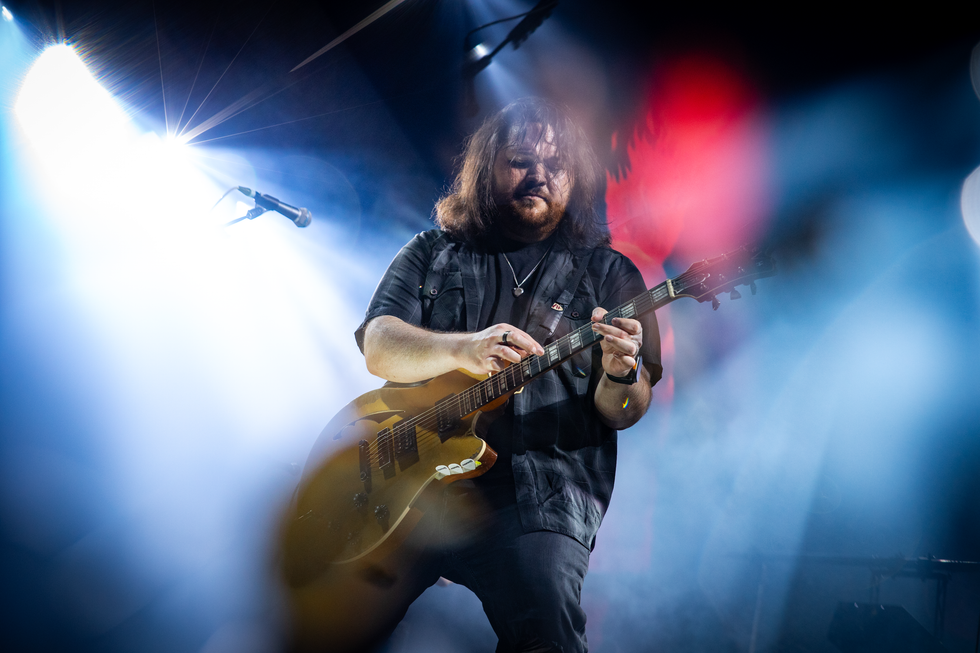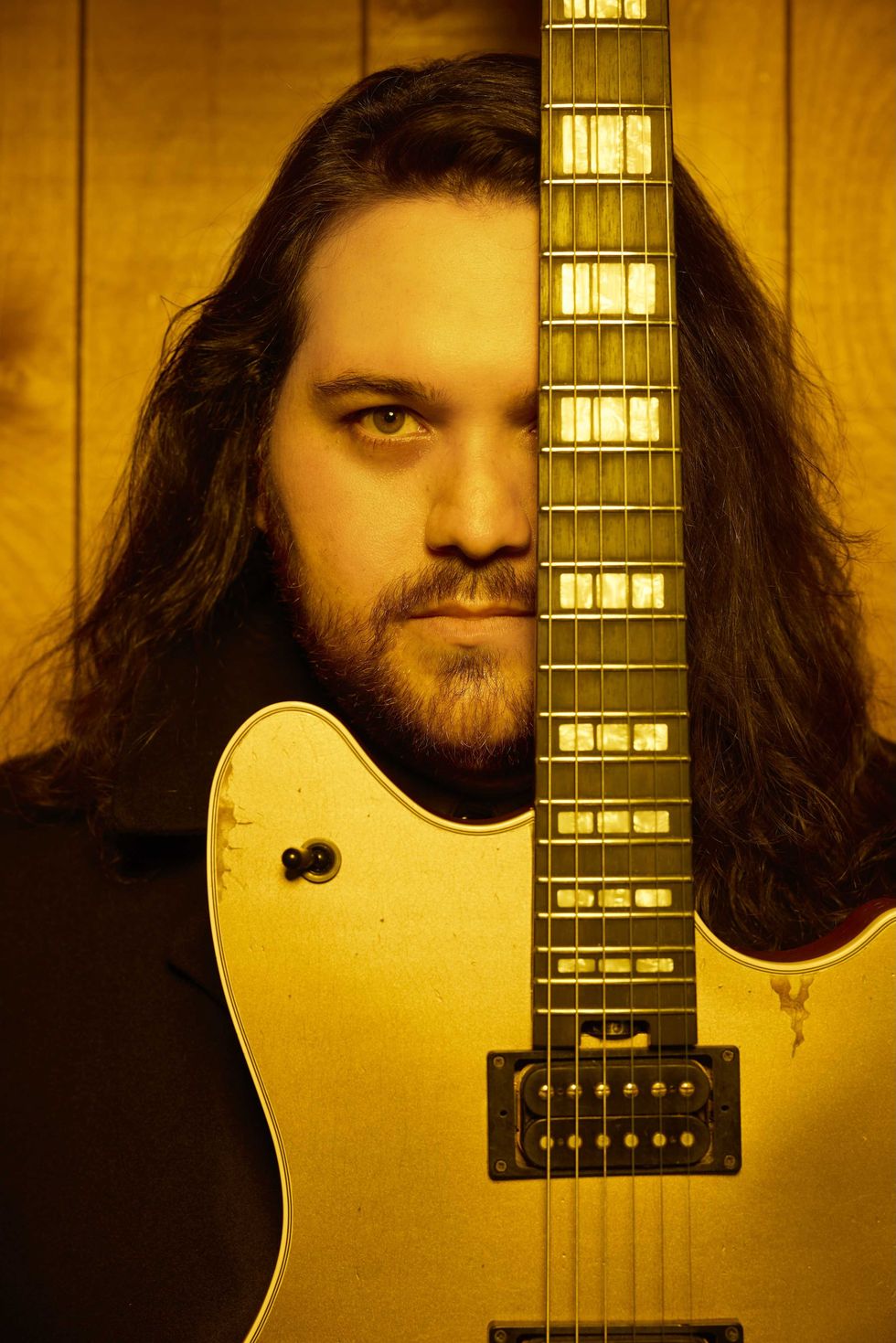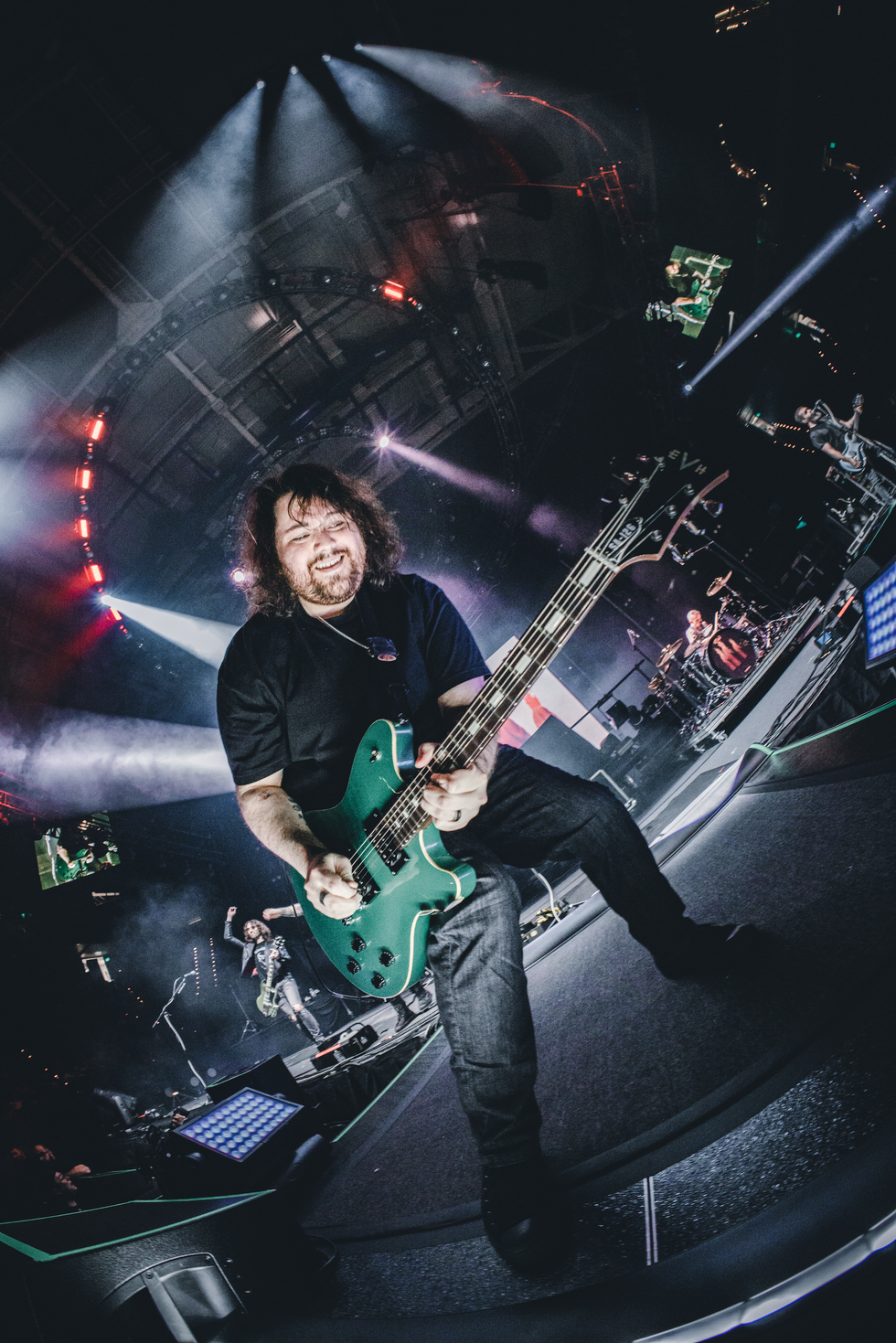Cutting-edge jazz-fusion guitarist Wayne Krantz believes that sometimes discomfort is necessary to move forward, and his latest release, Howie 61, takes him squarely out of his comfort zone. The album features composed, vocal-driven songs that, on the surface, are reminiscent of the music of Steely Dan (a band that Krantz worked with early in his career). The effort radically differs from Krantz’s past outings, which almost exclusively highlighted his adventurous and completely improvised, rhythmically dizzying guitar trio excursions. While some guitar-centric fans might long to hear more of Krantz’s ridiculous fretboard wizardry, he saw this as a critical step in his evolution. “It was really kind of a reaction against what I’d been doing,” Krantz says. “Every single record I’ve made since ’93 has been a band record and it’s been trio. I just couldn’t see the point in doing another document of another trio.” He called upon an all-star lineup featuring 18 of the biggest names, including John Patitucci, Vinnie Colaiuta, and Tal Wilkenfeld for the making of Howie 61. “When I get ideas like that I tend to sort of go whole hog, so I went from three [people] to 18.”
The seeds for Howie 61 were planted when Krantz gave up his decade-plus residency at New York City’s legendary 55 Bar on June 28, 2007. The 55 was Krantz’s sonic laboratory—it was there that he cultivated his unique style—but after playing every Thursday for years upon years, he feared becoming musically stagnant. During its run, Krantz’s 55 Bar gig was the ultimate shooting gallery for obsessive guitar junkies. A fan named Marc Bobrowsky needed his fix so bad that he would show up at every gig with a DAT machine and mics clipped to his glasses and just sit there motionless and record. When Krantz eventually checked out the recordings, he liked them so much that he mastered and released them as 2 Drink Minimum and Greenwich Mean. Two other official releases—Your Basic Live and Your Basic Live ’06 —later emanated from the 55, and to the delight of his voracious fans, Krantz also sold live recordings of virtually every gig from the bar through his website.
With the 55 Bar no longer the creative hub for Krantz’s esoteric explorations, he turned his focus to studio recording and even started incorporating vocals. He recorded Krantz Carlock Lefebvre in 2009 with his longest running trio, consisting of drummer Keith Carlock and bassist Tim Lefebvre. Howie 61 takes Krantz’s new direction to the next level. We caught up with the sonic pioneer in his Alphabet City pad to discuss where he’s headed, get insight into some of his unique rhythmic approaches, and to find out why he puts black tape on the headstock of his Tyler guitar.
Howie 61 features a strong emphasis on vocals. What prompted that?
The sound of voice and a guitar trio is like a complete sound to me. When you have a trio, you’re trying to figure out ways to make it sound fuller. Clapton and Hendrix were arguably the fathers of rock and blues-rock guitar, and they both balanced what they did with vocals. They weren’t instrumentalists. Early on, with the record Two Drink Minimum, I was wondering what it would be like to add voice. How would it work? How would it balance with the playing? What could the words be about? How could I sing it and play? It’s been something I’ve wanted to do for a long time but I knew I needed a studio to do it because, at the time, I was only making live records. The last record, Krantz Carlock Lefebvre, was actually the first studio record I made since Long to be Loose [1993].
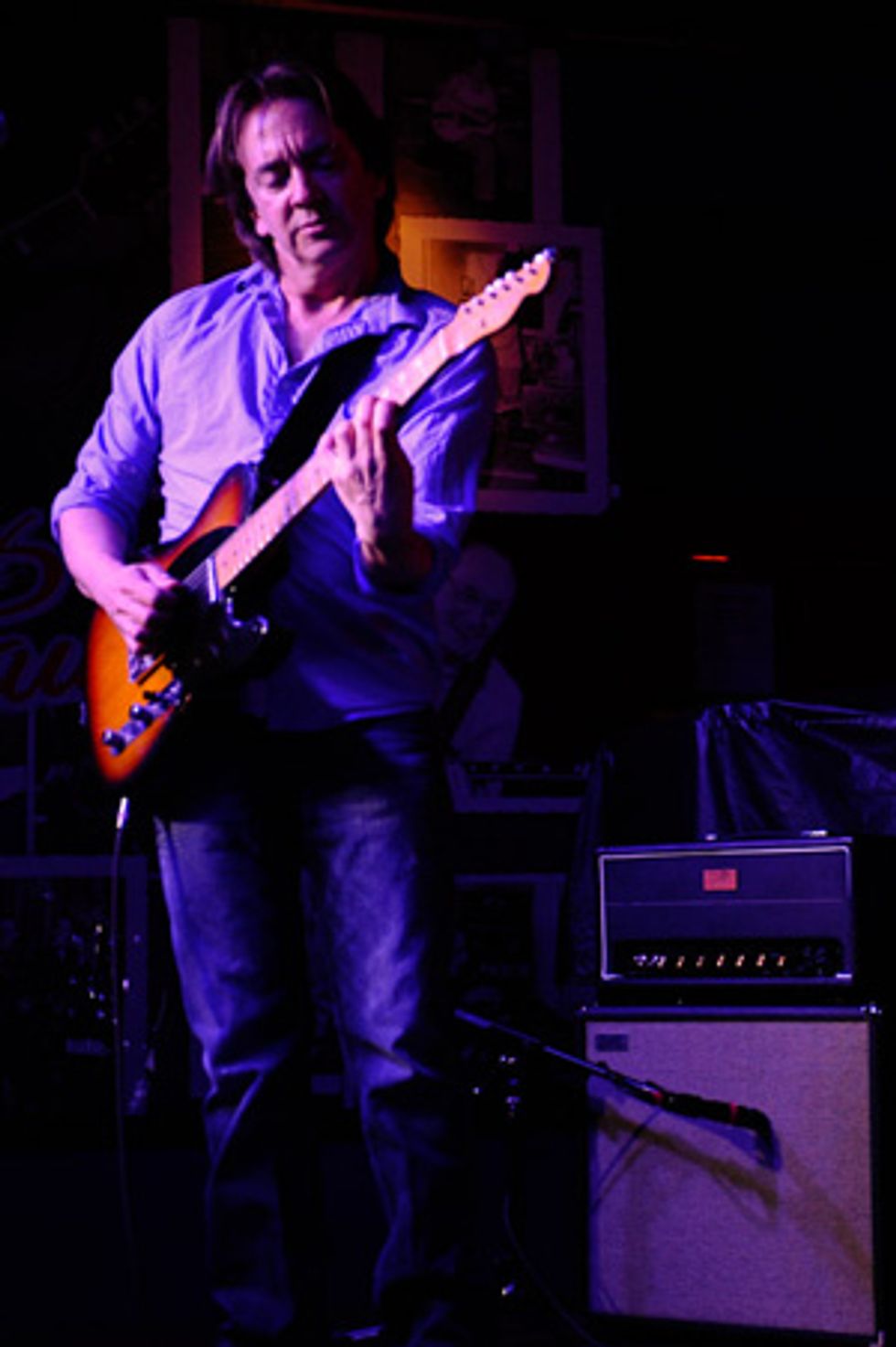
Are you aiming to reach a different audience by adding vocals?
I’m not because I don’t have access to audiences. My audience is whoever accidentally finds me.
But you do have a hardcore following. Every one of your 55 Bar gigs that I’ve been to over the years was incredibly packed, with lines stretching around the block— an impressive feat, especially considering your music doesn’t really pander to an audience.
No, because that’s not part of the concept—it’s not showbiz in that way. The world is filled with that and I think there’s a slight need out there for alternatives to that kind of presentation, and that’s what I offer. If it’s crowded it’s because there are enough people that get it and want a little change occasionally. That’s what they get when they see me play. Actually that brings up a good point and maybe I should say this, I have always tried to figure out how to make what I’m doing as accessible as it can be within the limitations of what I believe and what I think is right for the audience.
How so?
That factored into the decision, for example, to really get into my funk side and have a groove drummer. Part of that decision was, “Hey, this is going to help people like it.” I think that if you don’t do that, then it’s really up to chance whether anyone will come to your show. I’m not into obscurity. I’m not into being inscrutable or complicated or abstract. I want to figure out how to make what I do as easy to understand as possible without compromising it.
A lot of your music is based on live improvisation and feeding off of and reacting to what happens on the bandstand. I’m assuming that you might not have had the same telepathy with some of the musicians on Howie 61 that you do with guys that have been part of your working trios for years. How much of this record is improvised?
With the exception of the Ice Cube cover “Check Yo Self,” Howie is not a group improvisation record. It’s a composed record and the songs are shorter. The improvisation on this record mostly happens against other composed stuff.
Not long ago you did a few nights of covers at the 55 Bar of music by bands like The Strokes. Are you intentionally choosing material from bands that a hardcore Wayne Krantz fan might not take seriously?
The reason I did that was just to break up what I’d been doing down there. I hadn’t done covers in my life, professionally, until that series of four or five gigs that I did at 55 Bar. I chose a different artist to cover each night and we just played that artist’s music all night. I used their music just like I use the little compositional bits in my own music to improvise from. We ended up treating their music just like it was mine.
On songs like “Son of a Scientist,” there are parts that are reminiscent of Steely Dan. Have they influenced you musically?
They’ve influenced me greatly rhythmically, in terms of my rhythmic placement.
On your website, you talked about how your time wasn’t cutting it during the Steely Dan sessions. That’s pretty mind-boggling because most people consider your time to be incredibly strong. Can you explain what that’s about?
I’ve always had good time, but that’s when I realized the difference between having good time as sort of a jazz player and having good time as sort of an R&B player—there’s a different kind of placement. I’m generalizing wildly right now, but Donald [Fagen] and Walter’s [Becker] placement is centered in the beat. It’s in the middle of the beat. It’s not in front of the beat. It’s not behind the beat, although they experiment with that. They feel the time is in the center of the beat and so does their rhythm section. The guys they hire to play bass and drums also feel the center of the beat. That’s coming from an R&B place. I wasn’t there at that point—I couldn’t hear that, I couldn’t find that place. So it sounded like the band was in one time feel and I was in another and at that moment I realized, “I need to get this,” because I like the power that rhythmic ideas have when they are dead center like that. I wondered how it would work if my ideas—which are pretty radically different from their ideas rhythmically—were placed similarly, in that middle of the beat. I started working hard on that and I got it together. So, since then, my time has gotten better.
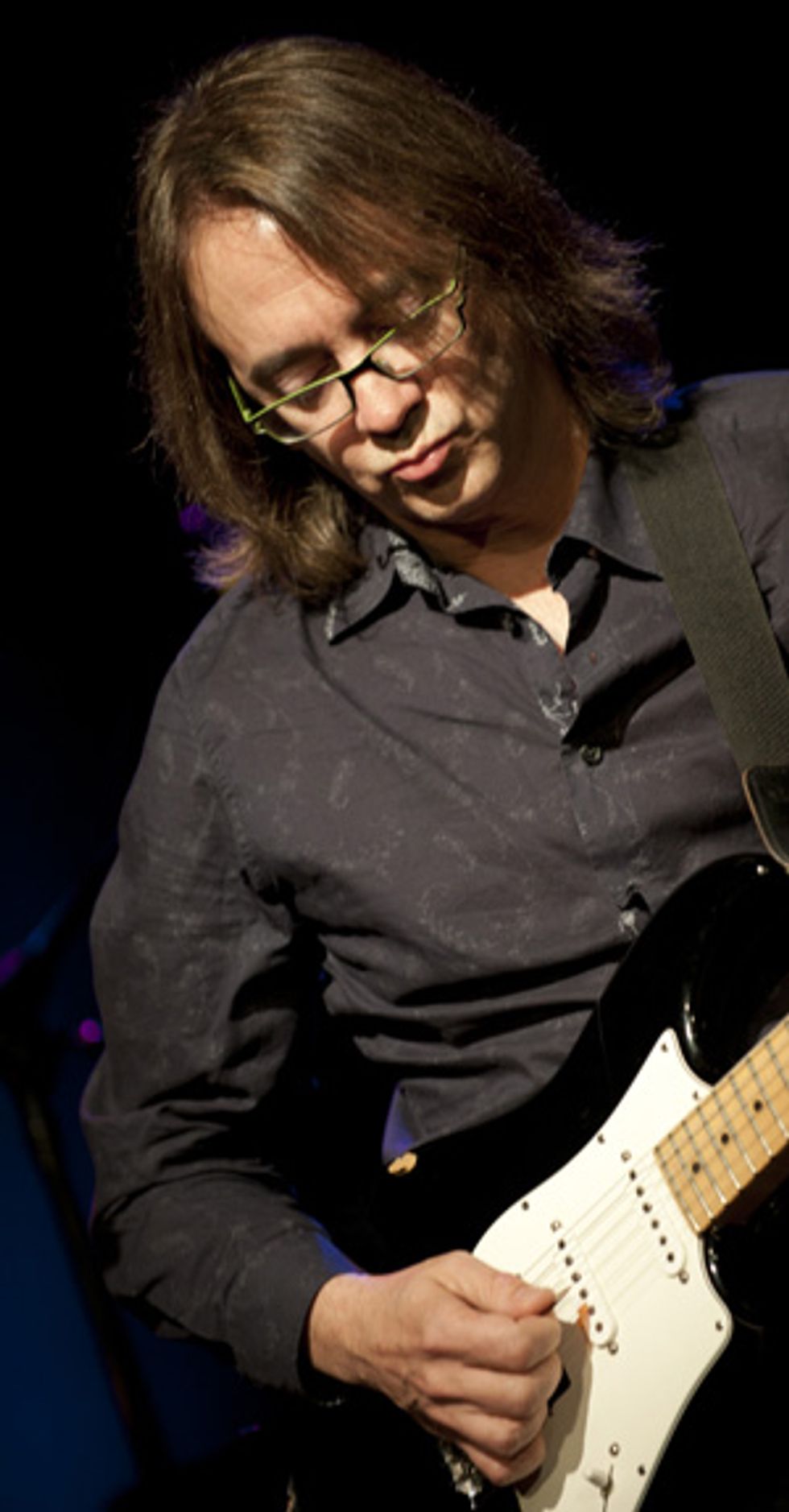
What rhythmic issues do you hear most often with guitarists?
Most people that play in a syncopated way or that play a lot of notes tend to rush. They kind of push the beat a little bit and when you do that, it slightly and sometimes not so slightly, compromises the power of the groove.
In terms of the rhythmic placement of notes, your music is strictly based on the grid, whereas someone like Allan Holdsworth plays more free and floaty.
It floats. There is no such thing as better or worse. It’s a completely different approach. It’s a different conception and it allows him to access stuff that I can’t and it allows me to access stuff that he can’t or doesn’t, or doesn’t choose to. It depends on what you’re hearing. I grew up listening to funk and rock, which are grid based, so that’s my thing.
Your rhythmic imagination is one of the most compelling facets of your style. What are some of your favorite metrical superimpositions against 4/4?
I don’t know. If you analyze it, it ends up being 3, 5, 7, and sometimes 9 or occasionally 11/4. The reason I can say that is because I’ve transcribed what I’m saying to see what it is.
So you’re not consciously thinking to yourself something like, “I’m going to superimpose 7/16 over 4/4?”
I don’t think numbers. I don’t even know what it is unless I stop and try to figure it out.
A lot of your music is based on live interaction, but when you practice at home with just a metronome, how do you get into that “head space” without anyone reacting to what you do?
If it’s an improvisational situation, I’m really depending on the other players to give me ideas and keep things alive. So I practice improvising without that, and the metronome—that irritating quarter-note click—becomes the most creative band ever in my mind. I just try to improvise based on that, and if I listen back to it on tape and it sounds boring to me, I try to figure ways to activate.
You now have lesson MP3s for sale on your website. A lot of times on these lessons, you’d rewind something you played and while listening back, say things like, “Oh, I rushed a little bit here and there.” Is it just splitting hairs?
It’s very much splitting hairs. This is detail I’m talking about.
If in a 5-second practice clip with a metronome you’re hyper-critical and aware of some perceived microscopic rhythmic discrepancies, what’s happening through a whole night of live playing when other musicians are involved, and all sorts of things are going on that are not within your control?
Well, what is practicing? Practicing is when you take the time to sit down and pay attention to detail and try to work on those hairs that you’re trying to split. Art is in the detail. Then you go to a live gig and try to implement what you’ve been working on. You try to take some of the skill that you’re managing as a practicer into the arena. At that point, all bets are off. All you can do is play music and try to make it sound good. It’s not like I sit and listen to tapes of live gigs agonizing that I rushed here and there. I’ll tell you this—I’d never put that on a record. That would be part of what would determine what should go on a record: What the time feel is.
But you’ve also released a ton of unedited bootlegs over the years.
Yeah. But I didn’t release those as records. I released them as just downloads. I just had a policy of whatever we play, I’m going to put up there just to document what we’re doing. I think most of the people that would bother to download that stuff or come to the shows understand what we’re trying to do to some degree, in the sense of, it might not be some flawless perfect show that gets replicated night after night, but it’s like you throw the dice and this could go places I’ve never gone before. It’s worth the chance. So you just try to work at optimizing the odds so that chance pays off more often than not.
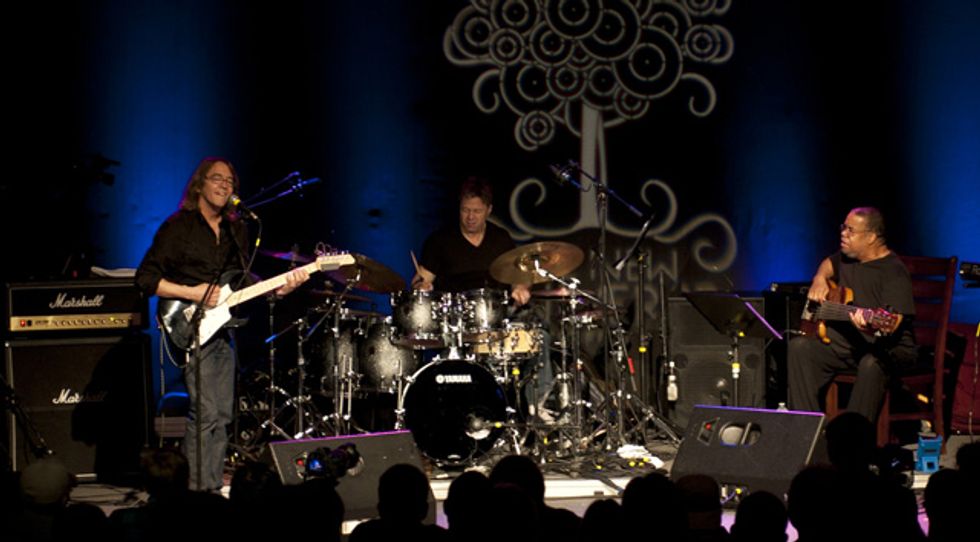
In 2001, before younger players really embraced his language, George Garzone said to me, “Wayne Krantz is the only guitar player who can hang with me on the chromatic shit.” Why did he say that?
When we played together, which was 1982 or something, I was playing a lot of chromatic stuff like he was. At that time I was very heavily into the post-bop thing on guitar, really exploring that—all the 16th-note lines and the chromaticism. We connected on that level. I should say that maybe eight or 10 years ago, I was playing in Boston and I went and sat in with him. He came up to me after the gig and said, “Man you’re not playing that stuff anymore.” He was kind of shocked that I wasn’t doing this chromatic shit like I was before. It was true. I don’t play like that anymore. I’ve shifted away from that. But at the time, that’s where I was.
Wayne Krantz’s Gear
Guitars
James Tyler Studio Elite
Amps
Marshall 2553, Tyler Amplifier JTM46, Tyler cab with 1x12 and 1x10 speakers
Effects
Strymon El Capistan, Boss DD-3, Boss OC-2, Boss TU-2, Wampler Pinnacle, Electro-Harmonix Freeze, Dr. Scientist Reverberator, Moog MF-102, Hiwatt custom wah
Strings and Picks
D’Addario .010s
Fender (medium)
Let’s talk gear now. Although, on the surface, your music defies guitar traditions and conventions, your actual sound is very guitaristic. Why is that?
The whole idea in the beginning was to take this really stock format and try to make it new somehow. What could be less interesting than guitar, bass, and drums? What’s been done more than that? That’s what I wanted to try to do and the guitar sound was part of that. There’s lots of precedent for it in other styles of music but in jazz or fusion, during that period around 1990, everyone was using huge, lush beautiful guitar sounds and it was really weird to just go direct. And that got factored into the whole vibe of, “Let’s try to have a new take on this old thing.” I got rid of the multi-amps and the stereo this and the stereo that, and I just went down to a guitar into a Deluxe turned to 10.
Which pickup positions do you prefer?
Positions 4 and 5.
I noticed that you’ve taped up part of your Tyler guitar’s headstock.
I’m into graphics. I care about that and James Tyler has a design there that I just didn’t like. He’s cool with it. In fact, he’s making me a guitar and he’s actually going to build it with that black stripping.
You’re also using Tyler amps, but it’s not the same Tyler as your guitar, is it?
No. It’s a different Tyler. He’s from New York, and he makes amps and sells them at 30th Street Guitars. I heard it down there and it blew me away. The cab’s got one 12” and 10” speaker and it’s really light. It’s the lightest cab you’ll ever lift in your life.
YouTube It
Check out Wayne Krantz’s head-spinning guitar improvisations in these live performances.
Footage of the quintessential Wayne Krantz trio, featuring Keith Carlock and Tim Lefebvre, performing at NYC’s Sullivan Hall on December 9, 2009.
Excellent full-length concert of Krantz performing with Chris Potter’s Underground.
A gritty look at Krantz in his element at New York City’s legendary 55 Bar.


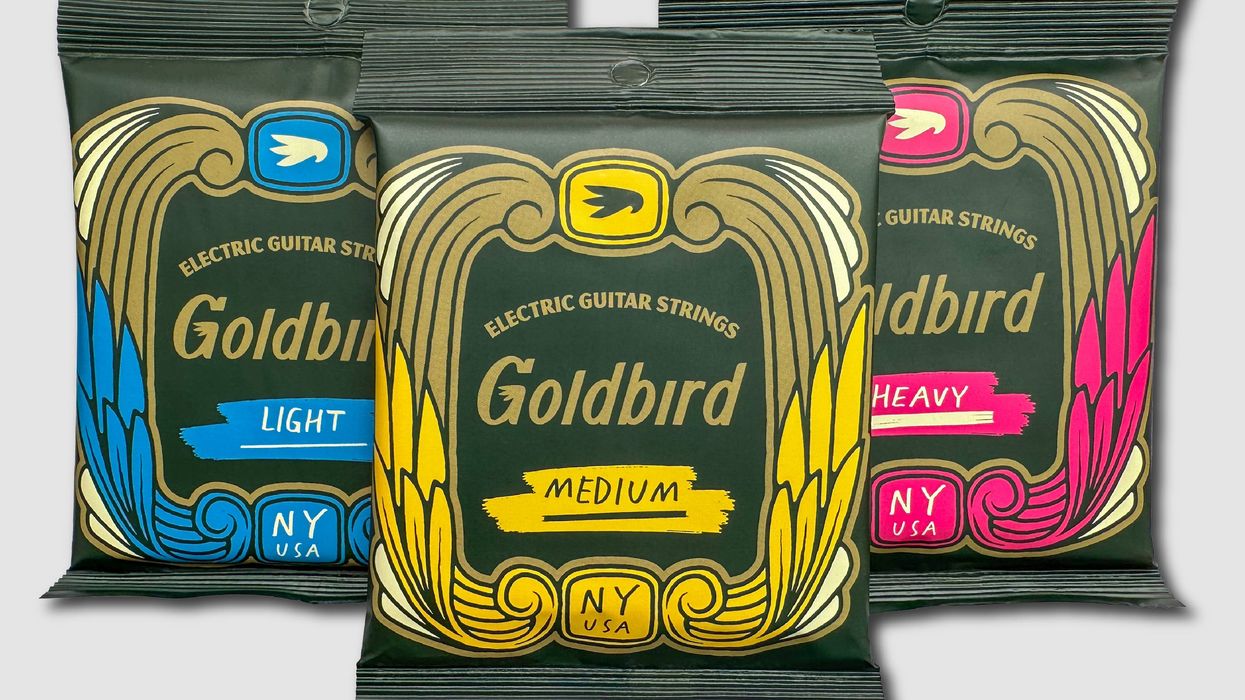
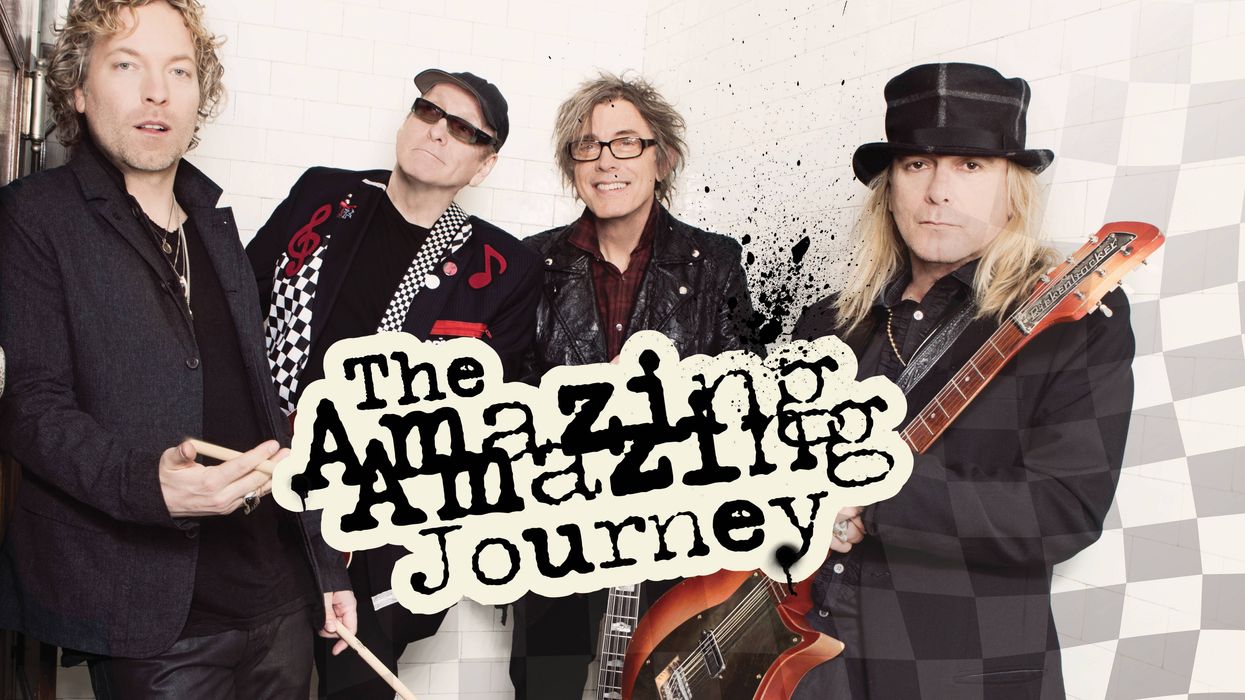
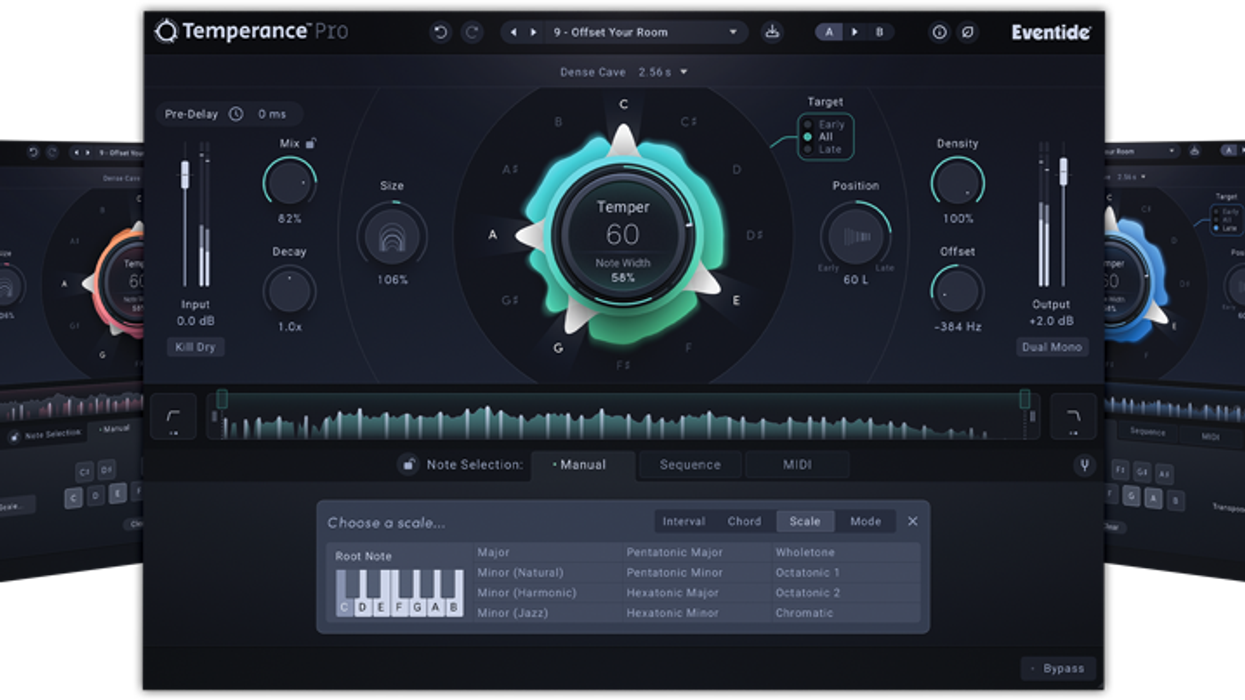
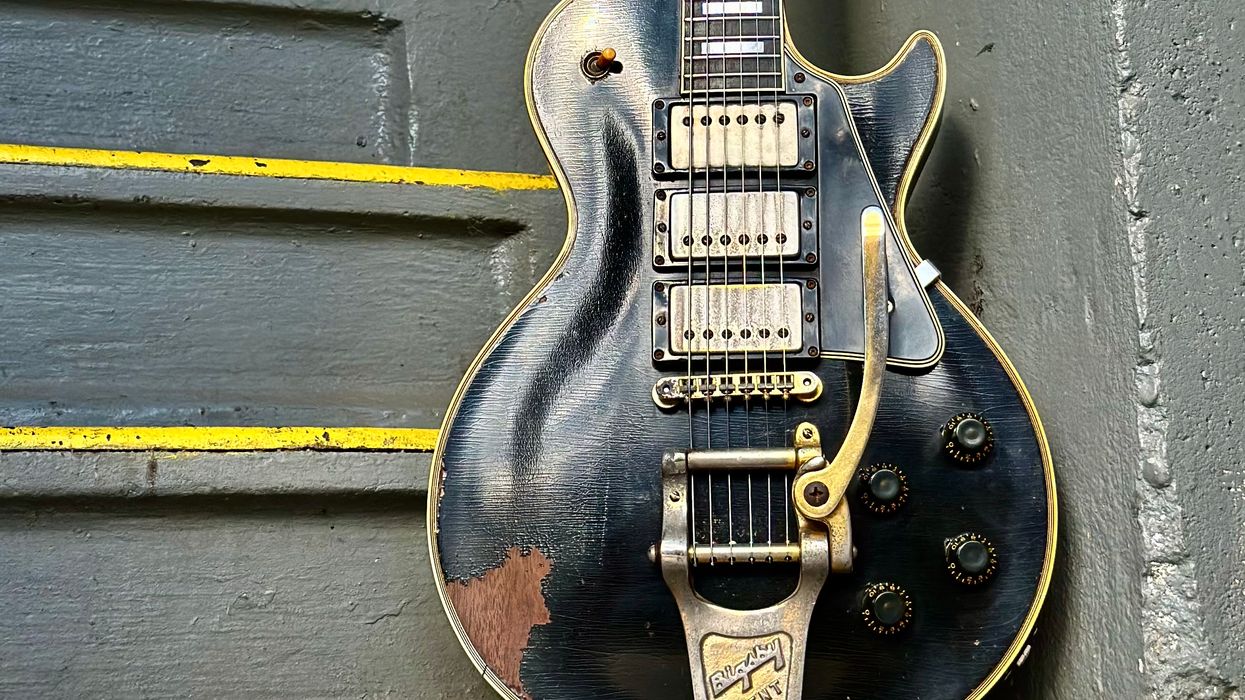








 Zach loves his Sovtek Mig 60 head, which he plays through a cab he built himself at a pipe-organ shop in Denver. Every glue joint is lined with thin leather for maximum air tightness, and it’s stocked with Celestion G12M Greenback speakers.
Zach loves his Sovtek Mig 60 head, which he plays through a cab he built himself at a pipe-organ shop in Denver. Every glue joint is lined with thin leather for maximum air tightness, and it’s stocked with Celestion G12M Greenback speakers.







![Devon Eisenbarger [Katy Perry] Rig Rundown](https://www.premierguitar.com/media-library/youtube.jpg?id=61774583&width=1245&height=700&quality=70&coordinates=0%2C0%2C0%2C0)


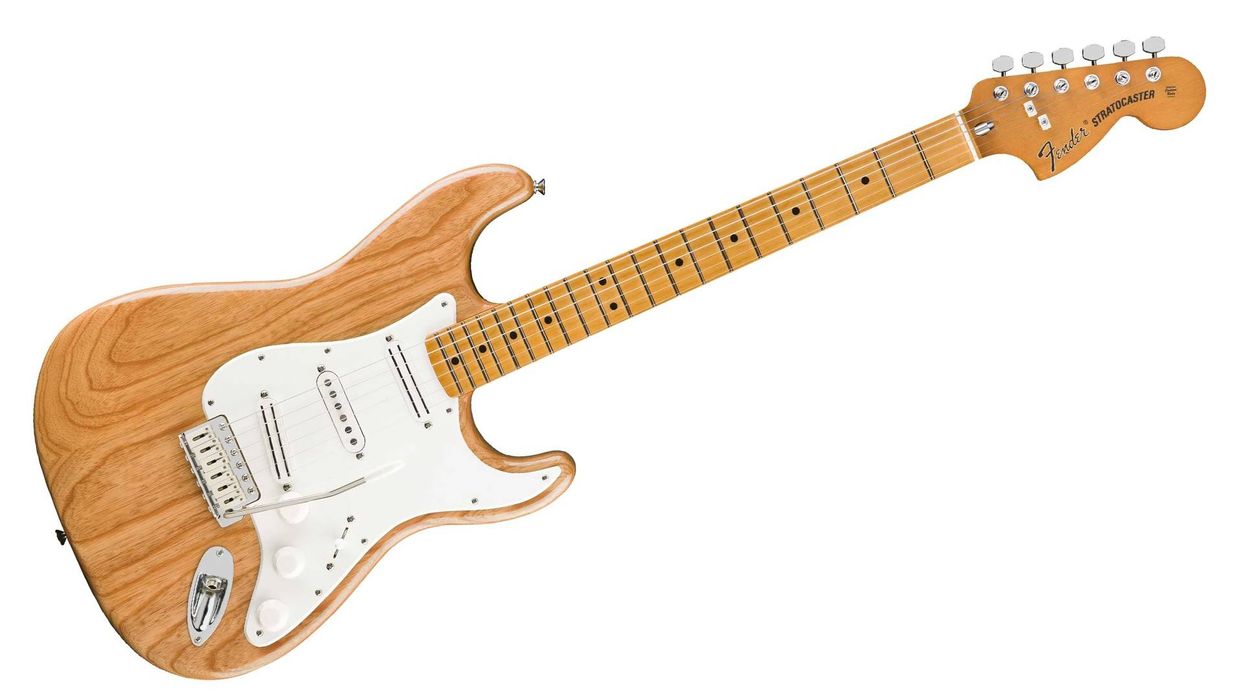








 Luis Munoz makes the catch.
Luis Munoz makes the catch.






























